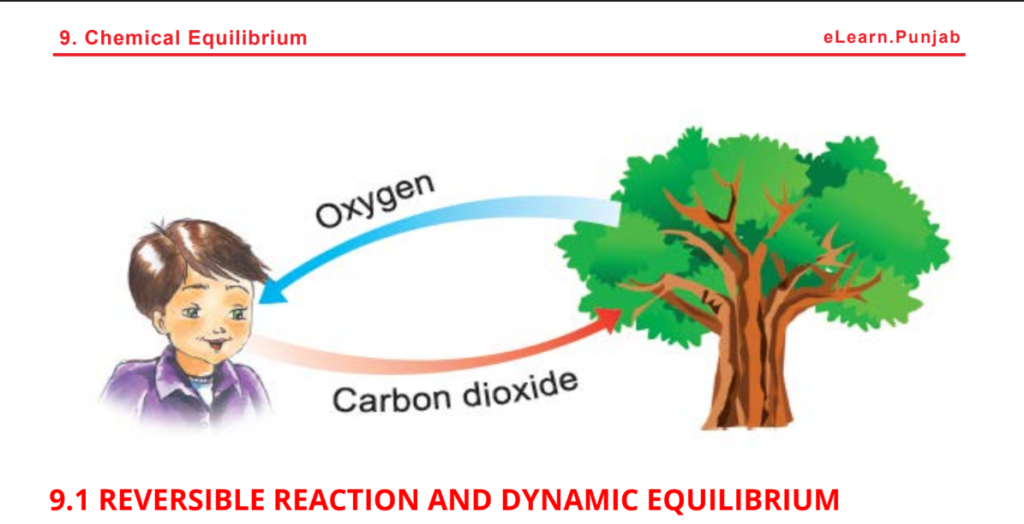In this chapter, we will explore the concept of chemical equilibrium, which challenges the common assumption that chemical and physical changes always proceed to completion. Instead, we will examine how many reactions are reversible, meaning they can proceed in both the forward and reverse directions. This duality leads to a state where the rates of the forward and reverse reactions become equal, resulting in constant concentrations of reactants and products, thus achieving equilibrium. By understanding the Law of Mass Action and deriving the equilibrium constant expression, students will gain insights into the necessary conditions for equilibrium and the characteristics that indicate its presence in various chemical and physical processes.

Reversible Reaction
In a chemical reaction, the substances that combine are called reactants, while the new substances formed are referred to as products. For instance, when hydrogen (H₂) and oxygen (O₂) combine, they produce water (H₂O).
Irreversible Reaction
Most reactions in which the products do not recombine to form reactants are classified as irreversible reactions. These reactions are considered to go to completion and are represented by a single arrow (→) between the reactants and products.
Dynamic Equilibrium
Conversely, reactions in which the products can recombine to form reactants are known as reversible reactions. These reactions do not reach completion and are depicted by a double arrow (⇌) between the reactants and products. Reversible reactions proceed in both directions, consisting of both forward and reverse reactions. Thus, a reversible reaction is one that can occur in either direction, depending on the prevailing conditions.
Law of Mass Action
The Law of Mass Action, proposed by Guldberg and Waage in 1869, states that “the rate at which a substance reacts is directly proportional to its active mass.” Furthermore, the rate of a reaction is directly proportional to the product of the active masses of the reacting substances. Active mass is generally understood as the molar concentration of a substance, expressed in units of mol dm⁻³ and typically represented in square brackets [ ]. For example, consider a reversible reaction where the concentrations of the reactants are crucial in determining the rate at which the reaction proceeds.
Equilibrium Constant and Its Units
The equilibrium constant (Kₐ) is defined as the ratio of the product of the concentrations of the products, each raised to the power of their coefficients in the balanced chemical equation, to the product of the concentrations of the reactants, also raised to the power of their respective coefficients.
In the equilibrium expression, the products are conventionally placed in the numerator, while the reactants are in the denominator. By knowing the balanced chemical equation for a reversible reaction, we can formulate the equilibrium expression and calculate the numerical value of Kₐ using the actual equilibrium concentrations of the reactants and products.
It is important to note that the value of Kₐ is temperature-dependent and does not rely on the initial concentrations of the reactants and products.
Additionally, Kₐ has no units in reactions where the number of moles of reactants is equal to the number of moles of products, as the concentration units cancel out in the Kₐ expression. For example, in a reaction where this balance exists, the equilibrium constant simplifies to a dimensionless quantity.
Please Click here to see the full chapter
